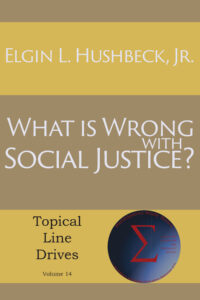A Review of Richard Dawkins' The God Delusion Part X
Listen to the MP3
Nov 2, 2007, Wausau, Wi—In this installment of my review of Richard Dawkins’, “The God Delusion” I come to what Dawkins calls “the central argument” of his book. About this argument he claims that if it “is accepted, the factual premise of religion – the God Hypothesis – is untenable. God almost certainly does not exist.” (pp 157, 8) This central argument centers around the apparent design we see in the natural world around us. He summarizes his argument in the following six points:
1 – The appearance of design is one of the greatest challenged to the human intellect.
2 – The “temptation” is to attribute design to a designer.
3 – The designer hypothesis is false because it does not explain who designed the designer.
4 – Evolution, the best explanation so far, shows that design at least for biology is an illusion.
5 – Since in evolution, apparent design is an illusion, it could be an illusion in other areas such as physics.
6 – We should not give up hope of finding better explanations elsewhere and the weak explanations we do have are better than explanations that rely on God.
I have to admit that when it became clear to me what his actual argument was, I was both shocked and disappointed. I was disappointed because, despite his simplistic approach to the whole subject of religion up to this point, I was still expecting something a little more substantial. This was particularly the case when, in a section on Irreducible Complexity, he spends several pages refuting the claims made in a Jehovah Witness’s track.
This again reveals a major flaw in Dawkins thinking and his approach, though in his defense, it is one common to all groups. All groups of any size, be they political, religious, or whatever, have those who are on the fringe. By their very nature of being on the fringe they often make arguments that are not representative of the whole, but despite this, opponents often see refuting the fringe to be the same as refuting the whole.
Jehovah’s Witnesses are a small group that are not orthodox Christians and thus not even representative of Christianity, much less theism in general. They are also marked by strong tendency towards anti-intellectualism. Yet Dawkins still spends several pages on one of their tracts, refuting a source that even most theists would not take seriously.
Not only was I disappointed, I was shocked as to just how bad his argument actually was. In fact, given point six, it is more an expression of hope than an actual rational argument.
If taken as an argument, there are problems with each of his six points. At first blush, point one may seem reasonable, particularly since it claims the problem of apparent design is only “one of the greatest challenges.” Yet it has a hidden assumption that is very much a problem. In short, apparent design would only be a problem if there wasn’t a designer.
To be clear, it may be a very great challenge to discover the identity of the designer and perhaps how they executed their design, but the design itself would not be. To see this, imagine that that the first explorers to Mars were to find a watch laying on the ground. While it might be a very difficult problem to discover how the watch came to be there, the fact that the watch had been designed would probably not be an issue at all. As such, apparent design in the natural world around us is only a great problem if design is something that needs to be explained away without resorting to a designer. Thus Dawkins argument falls victim to circular reasoning right off the bat, as his initial premise assumes his conclusion.
This circular reasoning probably underlies the slanting found in point two when Dawkins talks about the “temptation” to attribute apparent design to a designer as if it this were somehow inherently a false choice to be resisted. While no doubt this is Dawkins’ view, to build it into his argument in this fashion is illegitimate and perhaps shows that even he sees the weakness of his argument and feels a need to push the reader with his choice of words, rather than relying on the strength of his reasoning.
The problem in point three, who designed the designer, again results from Dawkins’ simplistic approach to the entire subject. The key problem for Dawkins is that whether something was designed or not designed, only comes into play for things that had a beginning. The issue of design is inherently linked with the question of how something came into existence. It is therefore meaningless when discussing things that have always existed. By definition design must precede existence. As such, when talking about an eternal God, the question of who designed God is an irrational question, akin to asking ‘What is the difference between a duck?’ It may at first sounds like a question, but the more you think about it the less sense it makes.
So, Dawkins third points, is simply false, at least if one is referring to a God such as the eternal God of the Bible. I will look at the problems in the remaining points next time, but it is important to remember that if the premises of an argument are flawed, the argument itself is unsound. Based on the first three points, Dawkins argument already fails.
This is Elgin Hushbeck, asking you to Consider Christianity: a Faith Based on Fact.







October 24th, 2009 at 7:00 pm
Your argument about something that always existed is similar to what some physicists now believe – that the universe(s) is a closed, self-consistent set of rules that define what we call the universe. “Outside” is irrelevent and may not even exist. The difference is that you seem to think this implies some kind of God. It doesn’t. Quite the opposite – a God is most unlikely to fit this description. A God, as most theologians think of a God, is a pretty complex thing. It’s interactive. It’s involved. If it’s interactive, it has to be “in something” and, boom, you’re back into regression.
The only way out, that I can see, is that the universe(s) are simply self-consistent and, as such, can exist. Possibly this means they have to exist and that every universe that is self-consistent has to exist. Of course, they exist outside out definition of space, of time. Anything else ends in regressions.
October 29th, 2009 at 10:33 am
Mr Easton,
I have address some of these problems in earlier replies. How do you know what is “outside” is irrelevant? How do you know it is not complex? One problem here is that you seem to think that the existence of a possibility, e.g. that the universe is self-consistent, somehow precludes other possibilities, e.g. that is isn’t. I have looked at the development of these theories since I was a child. (science and space have always interested me). The last time I checked the universe still had a beginning, was not going to collapse on itself (to the contrary was accelerating its expansion) and still need something to get it started. Sure there are always lots of “theories” but they remain that, and regress remains a problem.